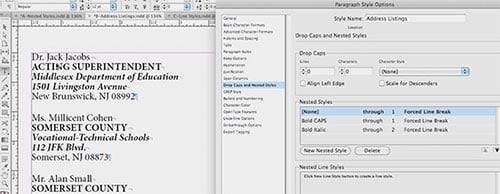

- ADOBE INDESIGN CC TUTORIALS HOW TO
- ADOBE INDESIGN CC TUTORIALS SOFTWARE
- ADOBE INDESIGN CC TUTORIALS PLUS
ADOBE INDESIGN CC TUTORIALS HOW TO
How To Get Started With Adobe InDesign CC – 10 Things Beginners Want To Know How To Do In this beginner Adobe InDesign Beginner Tutorial, you’ll learn how to use the layers panel, which is an essential part of what makes InDesign so great.
ADOBE INDESIGN CC TUTORIALS PLUS
Tuts Plus is a great place to begin these ‘5 Epic InDesign Beginner Tutorials’, as it provides it’s audience with great tutorials week after week. Our whole ethos at Graphic Tide is to support and promote artists and designers, by selling high quality t-shirt designs by our community, promoting artists on our social media channels, to providing helpful blog posts just like this one!ĭiscover the 5 epic Adobe InDesign Beginner tutorials to help you create some ace publications! Beginner Adobe InDesign Tutorials The Layers Panel: InDesign CS5 We’ve picked the 5 best beginner tutorials on the internet, which have all been linked back to their original sources. Within this blog post, we’re going to be sharing ‘5 Epic Adobe InDesign Beginner Tutorials’.
ADOBE INDESIGN CC TUTORIALS SOFTWARE
It’s a piece of software which is essential for any designer, but if you’re a beginner, not to worry, we’re here for you! Would you class yourself as a beginner with the software?įollowing on from our highly successful Photoshop and Illustrator tutorials, we thought we’ll share some more Adobe tutorials to help develop your skills.Īdobe InDesign is a fantastic piece of software, which allows you to create publications easily and effectively, from books, magazines, flyers to brochures. Writing begins at the beginning of the tarfile, instead of at the end.Want to develop your Adobe InDesign skills? The function portion of the key is specified by one of theĬreate. A file whose directory portion is 200 characters and whose basename is 50 characters could be archived (without using E) if a slash appears in the directory name somewhere in character positions 151-156. If E is specified, a name of up to PATH_MAX characters can be specified.įor example, a file whose basename is longer than 100 characters could not be archived without using the E flag. In addition, it must be possible to split the name between parent directory names so that the prefix is no longer than 155 characters and the name is no longer than 100 characters. When a file is archived, and the E flag (see Function Modifiers) is not specified, the filename cannot exceed 256 characters.

When file is the path name of a directory, the action applies to all of the files and (recursively) subdirectories of that directory. fileĪ path name of a regular file or directory to be archived (when the c, r or u functions are specified), extracted ( x) or listed ( t). If a file is specified in both the exclude-file and the include-file (or on the command line), it is excluded.

In the case where excluded files (see X function modifier) are also specified, they take precedence over all included files. Also beware of leading white spaces, since, for each line in the included file, the entire line (apart from the newline) is used to match against the initial string of files to include. Opens include-file containing a list of files, one per line, and treats it as if each file appeared separately on the command line. This operand enables archiving files from multiple directories not related by a close common parent. Performs a chdir (see cd(1)) operation on directory and performs the c (create) or r (replace) operation on file. The following operands are supported: -C directory file

) indicate that one of the arguments must create tape archives and add or extract files Synopsis tar


 0 kommentar(er)
0 kommentar(er)
